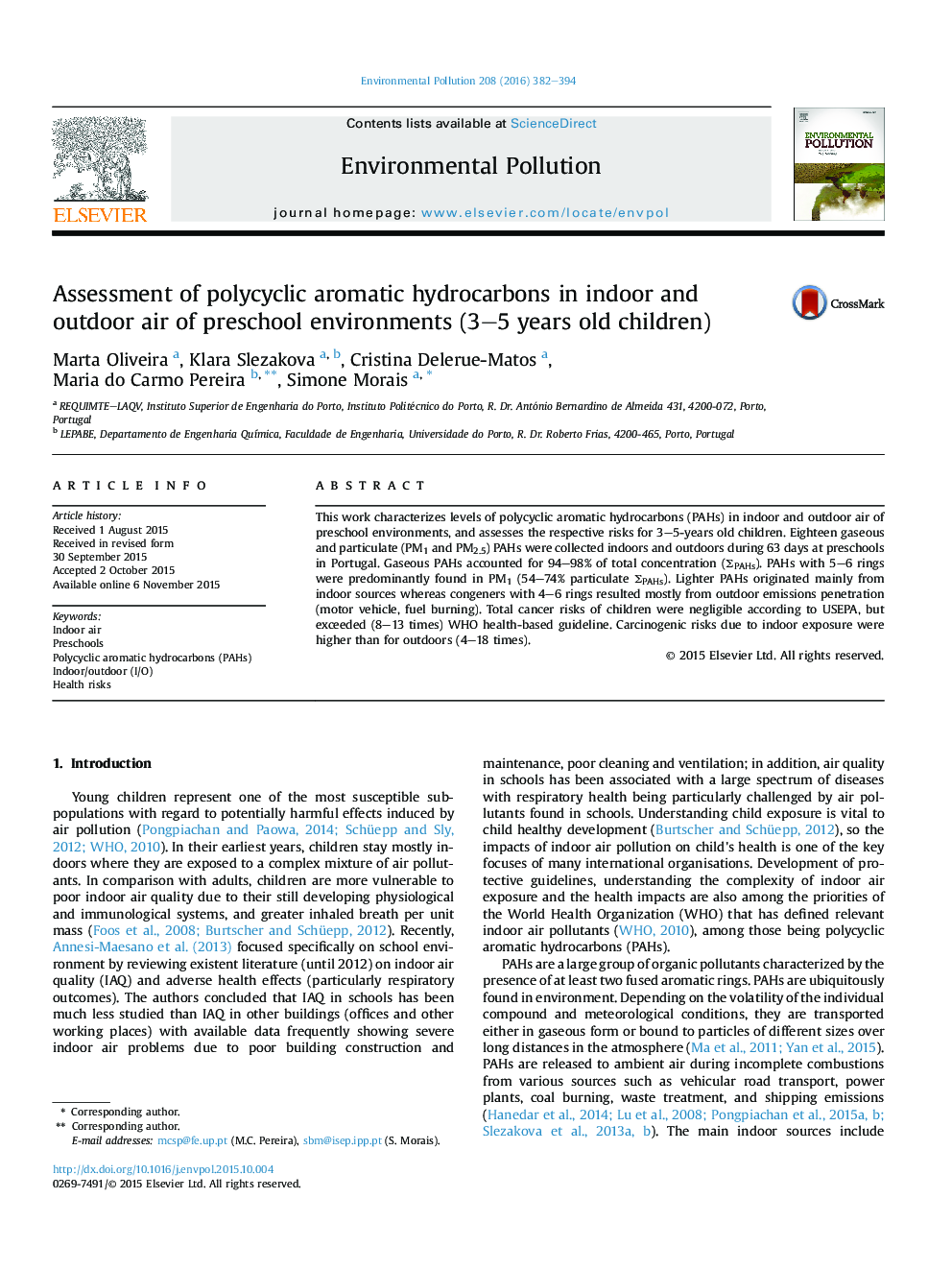| Article ID | Journal | Published Year | Pages | File Type |
|---|---|---|---|---|
| 6316246 | Environmental Pollution | 2016 | 13 Pages |
Abstract
This work characterizes levels of polycyclic aromatic hydrocarbons (PAHs) in indoor and outdoor air of preschool environments, and assesses the respective risks for 3-5-years old children. Eighteen gaseous and particulate (PM1 and PM2.5) PAHs were collected indoors and outdoors during 63 days at preschools in Portugal. Gaseous PAHs accounted for 94-98% of total concentration (ΣPAHs). PAHs with 5-6 rings were predominantly found in PM1 (54-74% particulate ΣPAHs). Lighter PAHs originated mainly from indoor sources whereas congeners with 4-6 rings resulted mostly from outdoor emissions penetration (motor vehicle, fuel burning). Total cancer risks of children were negligible according to USEPA, but exceeded (8-13 times) WHO health-based guideline. Carcinogenic risks due to indoor exposure were higher than for outdoors (4-18 times).
Related Topics
Life Sciences
Environmental Science
Environmental Chemistry
Authors
Marta Oliveira, Klara Slezakova, Cristina Delerue-Matos, Maria do Carmo Pereira, Simone Morais,
